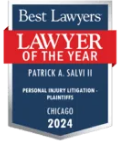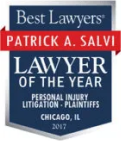Tara R.
Transcript:
Moderator: It’s the only firm she’s worked at. She clerked there and now is an attorney there. She’s been there over ten years. She’s handled quite a few cases in the medical malpractice and product liability area. Today she’s gonna talk to you about offers approved and preserving the record. Again, a very nuts and bolts type topic that all of us need to keep forefront of our minds. Tara Devine.
Tara R. Devine: Thank you. Can everyone hear me okay? So when I learned that I was getting preserving the record as the topic today, I have to be honest. I thought to myself it’s probably not the most glamorous or exciting topic. But it is a topic that you do need to be aware of when you’re going through and litigating your negligence case. And why is that? Because in the event that you do to choose to appeal your case, the burden is on you. The burden will be on you as the appellant to provide the court with the sufficient record to support a claim for appeal. Because if you don’t provide that record, the reviewing court will presume that the trial court had a reasonable basis for its ruling. So how do you go about during your negligence trial preserving the record? How do you go about doing that?
Well, the new Illinois rules of evidence–I’ve included it, rule 103 within your materials–goes forth and sets forth and makes it very easy for you to understand what you need to do to preserve the record during your trial. Everyone should have their little booklets by now. If you don’t have one, make sure to get one. These are the rules that went into effect on January 1st of 2011. And specifically, rule 103 sets forth effect of erroneous ruling. Error may not be predicated upon a ruling which admits or excludes evidence unless a substantial right of a party is affected and an objection is made in the event that evidence is being admitted or an offer of proof is made if the ruling is one excluding evidence. So you need to do one or the other during your trial to preserve the record.
So let’s talk a little bit about objections. You must make your objection at the time that you believe the evidence should not have come into trial. And don’t, please don’t…one of the main things that trial attorneys make the mistake of is you file your motions in limine [SP] before trial starts. And you assume that you’re protected then because the judge has granted your motions in limine. But then at trial, defense counsel violates it. Don’t assume you’re protected just because the judge had previously granted your motion in limine. Don’t assume it, you make sure at that time you object, state the basis for your objection, and also state what remedy you’re seeking. That may be a limiting instruction or simply asking that the jury disregard and moving to strike the testimony that was provided. But you need to make sure that you’re protected and don’t rely or think that you’re protected because you previously filed motions in limine. You need to make your objection again.
Offers of proof, very simple. You need to state that you want to make an offer of proof if the judge determines that he’s not going to let in evidence that you wanted to come in. And what you do is you go to side, outside of the presence of the jury, and the judge will be there, the court reporter, yourself, your witness, and defense counsel. And you will go through typically in question and answer format what you would’ve asked the witness had the event allowed to testify. So you simply go through. Mr. So and So, where did you work? How much did you make? How much time did you lose as a result of your injuries? So you go through question and answer format and the witnesses is allowed to also testify and then you have it all in the trial transcript. Because the court reporter is taking that all down.
So you’re at trial and you make your fuss, you’re doing the objections, you’re doing offers of proof. Well, what do you need to do after the trial is over? As I said earlier, the burden is on you to set forth and provide the appellant record for the reviewing court. I’ve set forth in your materials the records that you’re going to need to make sure are included. And that includes the common law proceedings, as well as the record of proceedings. I apologize…the common law record and the record of proceedings need to be included. But in addition to that, I wanna point out two more important things that you gotta make sure that you do.
First and foremost, go through the record yourself. I can’t stress this enough because we all know sometimes in the midst of trial, documents are flying. You think your orders on motions in limine made into the file but maybe they didn’t. You think that your motions in limine made it in but maybe they didn’t. Or things that were previously in the record do sometimes get misplaced. So that you can sleep better at night, go through the record yourself to make sure you’ve got everything in there that you believe needs to be in there.
In addition to that, make sure that you actually look to see that the transcript from the trial and an important ruling shows the argument that occurred before that ruling was made. That’s important because the reviewing court needs to see what context the argument was made within and when the ruling was made too, what context the ruling was made in. So you need to make sure that you have the trial transcript before a ruling is made showing what occurred immediately before that ruling.
So those are really–as I said, as [inaudible 00:05:35] alluded to–just the nuts and bolts as it relates to objections and offers of proof. But lucky for me, I also get to talk about bad faith claims, which is a little bit more exciting of a topic for today. So typically, what is a bad faith claim? Well, that’s when an insurance company refuses to settle a case that should be settled on behalf of its insured within the policy limits. And then what happens is you go to trial and you get a verdict in excess of the policy limits. The defendant gets wrought. And then what the defendant does or can do is assign the right over to the plaintiff to go against his own insurance company for the whole amount of the verdict. Regardless of what policy limits are, you get to go for the totality of the verdict.
So what do you need to prove to establish a bad faith claim? Well, there’s some recent good case law which sets forth the principles and the elements and the factors that the courts take into consideration when assessing bad faith claims. The two cases I attached to your materials are Swedish American Hospital versus ISMI. It’s a 2009 2nd district case. And I’ve included it not because it’s your typical bad faith claim but because it’s more recent and it is from 2009 and shows that the courts are still following these principles. That case involves more of a co-defendant in their insurance company versus another insurance company. And it’s pretty long, I have to admit. But I did want to include it because it is a 2009 holding.
In addition to that, I put in your materials the O’Neil versus Gallant Insurance Company case. And I’m gonna talk about that case in a little more detail in just a bit. But that’s a 2002 5th district case which goes through also the principles of a bad faith claim, the elements and the factors that the court’s taken into consideration. So what are the elements that you need to prove in a bad faith claim? And you should be thinking about this as your working up before you even get to trial. They’re very similar, if not identical, to what you make to prove in a negligence action. You need to prove duty, breach, cause, and damages. That’s it.
Now the duty, in this case, is a duty to act in good faith on behalf of their insurer. And to act in good faith, they need to determine whether or not they should settle the case within the policy limits on behalf of their defendant. And a duty to settle a case arises in a bad faith claim when the plaintiff can prove that there is a reasonable likelihood that their defendant will be found liable. The second thing that you need to prove is that there’s a reasonable probability that there will be a verdict in excess of those policy limits. So those are the two factors. If you can establish those two factors, you can establish that the insurance company had a duty to settle.
So let’s look at breach. Well, how did the insurance company breach their duty? That’s evidenced by simply demonstrating that the insurance company refused to negotiate or did not negotiate in good faith. How do you show cause? Well, that’s simple. How did the breach caused injury to their defendant? Well of course it did. Because when that defendant that whacked at trial for that excess verdict, it then exposes his personal assets. So that’s how you show the cause. And damages, that’s very easily calculated. It’s simply the amount above and beyond the policy limits that you reached at trial. So those are the four things: the duty, the breach, the cause, and the damages. There’s the four elements.
So what are the factors that the courts are looking at these days in assessing a bad faith claim in its totality to determine whether or not the insurance company acted in bad faith? Well, it’s very simple, it’s very common sense. They look to see what did the insurance adjusters recommend as to whether or not the case should settle. What did the defense counsel for the defendant say as to whether or not the case should settle and what the value of the case is? What were the communications that that insurance company had with their insured? Did they keep their client advised that there was an offer or an opportunity to potentially settle the case? They’ll also look, as I mentioned before, what is the potential for an adverse verdict? What is the potential or likelihood for the verdict to be in excess of the policy limits? Did they do a good job investigating the case? Did they do their due diligence in investigating the case? And what efforts, if at all, did the insurance company do in trying to settle the case?
So those are the seven factors which I’ve put in your materials that the courts are currently assessing and going through cases these days to determine whether or not bad faith has been established. Another critical thing that I want to talk about with bad faith claims, punitive damages. Punitive damages can be awarded in bad faith actions. It’s one of the few circumstances where you actually can seek them and they’re actually not that difficult to prove up in cases such as this. I’ve attached as I said that O’Neil versus Gallant Insurance Company case. And that’s because in that case–I’ll explain a little bit of the facts to you–punitive damages were awarded and affirmed.
What happened in the trial case and before the trial case, the defendant in the matter had her two-year old grandchild in her car with her at the supermarket. And the defendant exited her vehicle to go talk to a bystander, leaving the unrestrained two-year old in the car. Well, surprise, surprise, the two-year-old decided it was time to take a drive, got in the front seat, put the car into gear and ended up crushing the plaintiff in this matter between two vehicles in that parking lot. The plaintiff had to be flight for life out of there, in ICU for over 30 days, ended up having a crushed hip, multiple other broken bones, and then remained in a nursing home for the rest of her life.
The damages, in this case, were catastrophic and what did the defense have? The defendant had a substandard policy limit of $20,000. We’ve all seen it happened. So the trial attorney in that matter for the plaintiff, of course, sent a demand to the defense counsel and said, “Hey, look at these injuries. They’re catastrophic. They’re significant. We will execute a release on behalf of your defendant if you pay us the policy limits.” What did the insurance company do? Absolutely nothing. They didn’t even give him a response. And the plaintiff had included a time limit in there. Didn’t respond.
So of course, few days before trial in this matter, all of a sudden the insurance company gives the phone call. “Hey, we’ll tender to our policy limits. We’ll give you the $20,000.” Well, that’s what the plaintiff said in this matter. Forget that. I gave you that opportunity a year ago, we’re going to trial. And they did. And the plaintiff got a verdict for $730,000 and then the court executed and basically enforced, made the defendant assign the bad faith claim against the insurance company to the plaintiff. And then the plaintiff went forward and litigated the bad faith action. And the jury determined that not only was the plaintiff in that case entitled to the $710,000–that’s the amount that went above the policy limits that she was awarded in the trial–but they awarded $2.3 million in punitive damages against that insurance company.
And why is that? Because in that bad faith claim, the plaintiff was able to show that this insurance company had a repetitive history, all based in this one VP–executive VP Mr. Moss–of acting on 44 other cases just like they did on this. Where the verdict was gonna be above and beyond those $20,000 sub-standard limits and that the liability was clear. And they were able to show in 44 other instances where they exposed their own insured assets because of these excess verdicts.
And they were also able to show, through documentation, that all the claims manager, claim adjusters, and the supervisors of the insurance company had recommended settlement. The defense counsel had recommended settlement. They never told the defendant driver that they could settle the case for $20,000. And they were able to show that it was this one guy, this one executive VP, that was basically calling all the shots. Because he was the only people at that insurance company who could authorize a settlement over $15,000.
And so on this guy’s watch, he had done this numerous times again and again and the court goes through. It’s a great read, it’s an easy read, it’s a fun read this case because they really give it to insurance company. I had a good time reading it. So I recommend that you read it too but they go through the seven factors that I discussed and they go through the punitive damages. And you feel good at the end of it when they affirm the trial court and the bad faith ruling.
So let me talk about one other issue that comes up with bad faith as well. Assignment, which I kind of just alluded to. What is the assignment? Well, the assignment is when the defendant assigns his bad faith claim against his insurance company to the plaintiff. Believe it or not, I’ve had defense counsel tell me before, guess what? My client won’t agree to it. My client’s never going to assess, assign your bad faith claim to you. So good luck. And you know what I say? I don’t care. I don’t need it. I don’t need your client’s permission because the statutes provide the court with the authority to enforce that defendant to assign the right over to you. And I put in the specific provision which gives the courts that authority to do that. So don’t ever let them try to fool you that you somehow need the defendant in the case to approve signing over the bad faith claim to you.
Specifically, section 2-1402 subsection C-5 and it says, “When assets or income of the judgment data–which in this case would be the defendant–are discovered, the court may by appropriate order compel any person cited to execute an assignment of any chosen action.” To enforce–if you look at the last sentence–to enforce payment of a judgment or an aid of an enforcement of a judgment. So don’t let them try to fool you that you somehow need the consent of their defendant to go ahead with the potential bad faith claim.
Furthermore, how do you go about proving up your potential bad faith claim, even before you get to trial, even before you get to your negligence trial? If there’s one thing that you take from my speech here today, let it be this. Document everything that you sent to your defense counsel telling them why they should settle the case and what your damages are. Document, document, document. And I stress this because trust me when I say, if you file a bad faith claim, those are gonna be the exhibits that are used in that action.
So make sure that every letter that you send them, make sure that you have that in your file. Make sure that every telephone conference that you have with them that you put in the memorandum. And make sure that their responses to you as well are included in your file. So document it. Well, what do you need to set forth in your letters that you send? I’ll make this quick but you need to set forth your liability, you need to set forth your damages, you need to set forth your why it’s bad faith. You need to put a time limit and if there’s anything else.
And let me just talk about those really briefly and then I’ll wrap up here. Liability, make sure you spell out in plain easy language why the defendant will be held liable. And remember, when you had joint tort cases or more than one defendant, 25% or more and that defendant’s on the hook for the whole verdict. So make sure that you put that in your letter. So set forth your liability. Two, your damages in painstaking detail, both your past and future pain and suffering, past and future disfigurement, disability, you name it. Itemize it out, show them why your damages, you will be awarded a verdict in excess of the policy limits. Why do I say put a time limit in there? Because trust me, if you don’t, at a later date if you bring it up, they’ll say we didn’t know we had to respond. We thought that we had all the way up until the date of trial. If you put a time limit in there, it prevents them from trying to make a last minute offer on the eve of trial.
And lastly, when I say is there anything else, darn right ask them. Tell them, I put everything in there that you’ve requested so that you can fully and fairly evaluate the claim. Because if you don’t and you say is there anything else you need…because if you don’t, trust me. In a later date, they’re gonna come back and they will say, “Well, we were missing that one piece, the one piece that we needed to fully and fairly evaluate the claim. And that’s what the hold up was.” So you tell them I provided you everything that you’ve asked for. And if there’s anything else that you need, you need to tell me now.
I’ve also put two complaints that you can use in the event that you do have to file a bad faith claim. And lastly, the jury instructions I put in there because unlike most jury instructions, these are very clear, simple, to the point. And they go through everything that you need to do. So thank you very much for your time.







